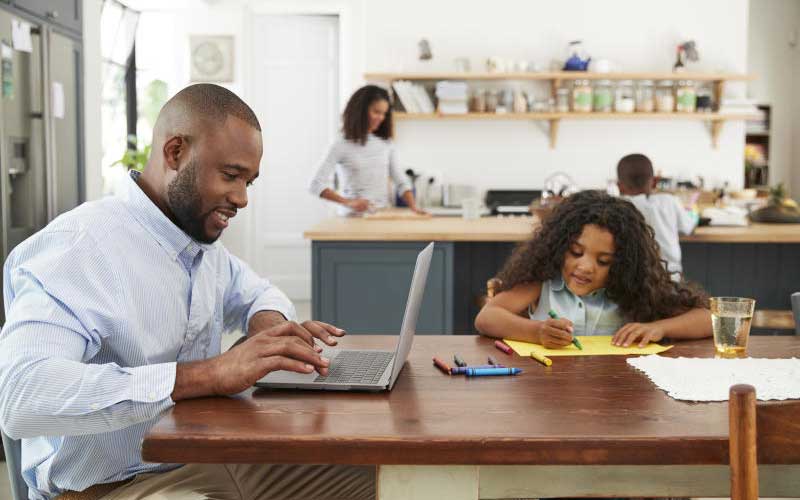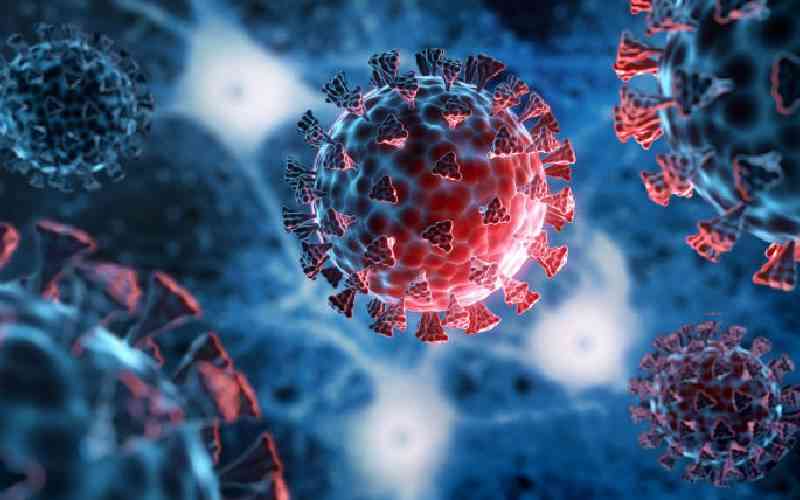
For years, our routine as social species has looked the same: wake up, have breakfast, commute to work, work through the day with the periodic dash for food at cafés, rush home, or meet up with friends before returning home.
But we are now surrounded by walls and are maintaining aggressive social distance to flatten the coronavirus infection curve.
This sedentary lifestyle we have adopted to save lives is cultivating a variety of serious health complications, which for some could be fatal.
1. Disrupted natural cycles
Science shows that sun rays calibrate the body’s circadian clock. This is the clock that helps your brain and organs regulate different hormones, including those that govern appetite, energy, mood and wakefulness.
We are constantly basking under the glow of our devices’ screens and an absence of enough natural light throws off our internal rhythms. This, over an extended period, predisposes one to an increased risk of obesity, diabetes, drug abuse, depression and other diseases.
Also, a lack of vitamin D, mainly made by our skin on exposure to the sun, leads to poor absorption of calcium. This eventually leads to an increase in allergy conditions like asthma, low-calcium hearth failure and rickets.
What you can do: Whenever possible, get snatches of time to bask in the sun. This is especially important for children, and will additionally better everyone’s mood.
2. Indoor pollution
Did you know that indoor air quality matters? This is more apparent in poverty-ridden areas. The air quality in our houses is affected by factors like dampness, the fuel we use, cleaning products, building materials and even furniture that turn homes into toxic boxes.
Indoor pollution can cause or aggravate respiratory diseases such as asthma, and can also lead to heart and lung diseases, stroke and even potentially cause dementia.
Prolonged exposure, according to recent studies, raises one’s chances of contracting Covid-19, the very illness you are staying indoors to avoid.
In 2012, the World Health Organisation (WHO) reported that household cooking with charcoal and biomass-burning stoves killed 4.3 million people while outdoor air pollution led to 3.7 million deaths.
What you can do: You can control the quality of air in your home through proper ventilation and following recommended practices to keep the air clean. Other things you can do include:
· Keeping rugs and carpets clean
· Opening the windows when possible
Stay informed. Subscribe to our newsletter
· Keeping houseplants
· Having a no-shoe policy. Shoes can track in chemicals and microorganisms you would rather keep out.
3. Social recession
Social contacts are a proven buffer against the negative effects of stress, and the new directive to stay away from each other has to a larger extent eliminated that firewall.
That new world order has left many people, especially the elderly, people living with disabilities and those with pre-existing medical conditions, exposed to isolation and loneliness.
This, according to researchers at Brigham Young University, presents a greater public health hazard than obesity. Their study found that chronic social isolation increases the risk of mortality by 29 per cent.
Studies show that loneliness causes stress, and long-term or chronic stress leads to more frequent elevation of a key stress hormone – cortisol.
It is also linked to a weaker immune response to pathogens and higher levels of inflammation in the body. This, in turn, damages blood vessels and other tissues, increasing the risk of heart disease, diabetes and premature death.
Knowing we have someone to count on is quite handy in our cardiovascular response to a stressful situation.
What can you do: This is the time to reach out to friends and family and connect with them however you can. Keep in touch with your friends and family more often, and use video calls where possible. Ensuring we are connected though social networking platforms reduces our exposure to chronic stress, while also observing social distancing rules of avoiding large crowds and close contact with others.
 The Standard Group Plc is a
multi-media organization with investments in media platforms spanning newspaper
print operations, television, radio broadcasting, digital and online services. The
Standard Group is recognized as a leading multi-media house in Kenya with a key
influence in matters of national and international interest.
The Standard Group Plc is a
multi-media organization with investments in media platforms spanning newspaper
print operations, television, radio broadcasting, digital and online services. The
Standard Group is recognized as a leading multi-media house in Kenya with a key
influence in matters of national and international interest.
 The Standard Group Plc is a
multi-media organization with investments in media platforms spanning newspaper
print operations, television, radio broadcasting, digital and online services. The
Standard Group is recognized as a leading multi-media house in Kenya with a key
influence in matters of national and international interest.
The Standard Group Plc is a
multi-media organization with investments in media platforms spanning newspaper
print operations, television, radio broadcasting, digital and online services. The
Standard Group is recognized as a leading multi-media house in Kenya with a key
influence in matters of national and international interest.





